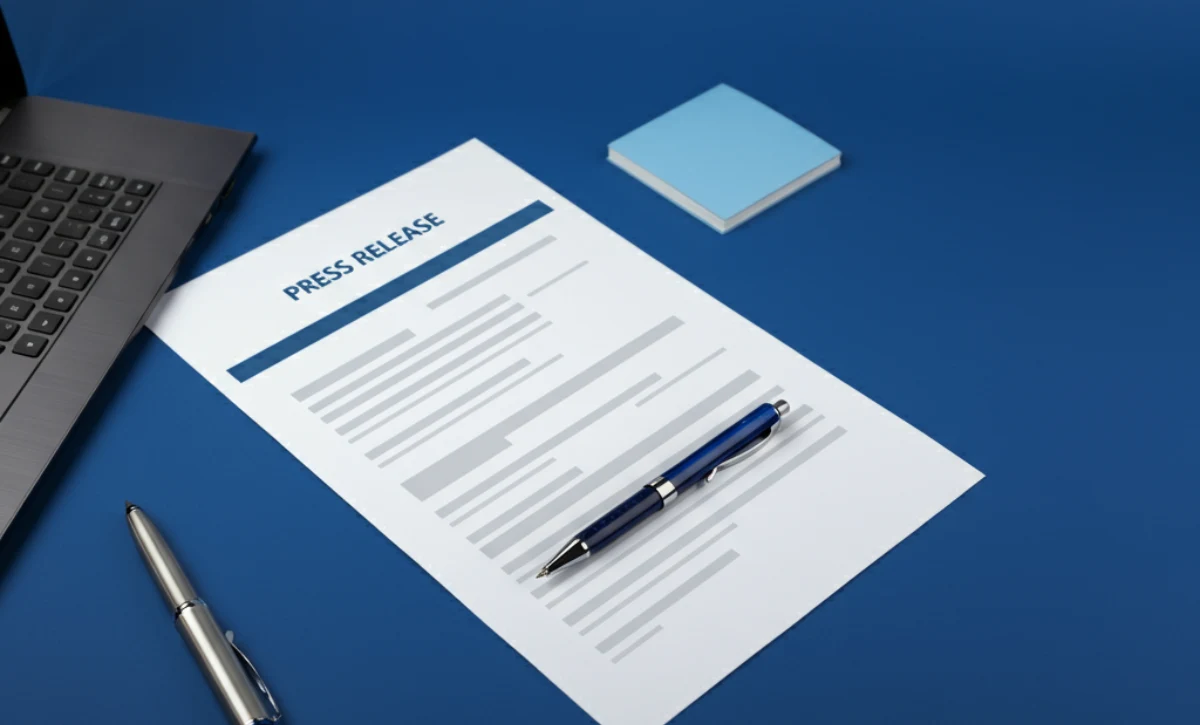A press release is more than just corporate jargon; it’s a genuine bridge between your news and the world. Whether you’re a local startup or a well-known brand, a press release helps you tell your story in your own words. Well-executed press releases can build trust, bring the spotlight to your achievements, and put you in control of your message. In this article, you’ll learn why press releases still matter and how to use them to connect with reporters, customers, and the public.
The Essential Role of a Press Release
When you want to share meaningful company news, a press release gets your announcement directly into the hands of journalists and news outlets. More than a bland corporate memo, it’s your chance to highlight something newsworthy and offer useful details for the media. Press releases can boost your credibility and keep your business at the center of conversations that matter.
Celebrating Company Wins
Businesses commonly use press releases to showcase big milestones: launching new services, expanding to new markets, or celebrating industry awards. The key is making your announcement interesting enough that journalists want to write about it.
Addressing Issues Publicly
If your company faces a challenge, a press release allows you to set the story straight. By sharing accurate details yourself, you minimize rumors and show you’re transparent and proactive. This builds confidence with both media contacts and your community.
Must-Have Elements for an Effective Press Release
Getting noticed by the media starts with a well-structured press release. Journalists are busy, so keeping things easy to read makes a difference. Sticking to the proven format below gives your news the best shot at coverage.
- Headline: Catchy, succinct, and aligned with your main message.
- Dateline: Includes city, state, and release date.
- Lead Paragraph: Answer the classic questions—who, what, when, where, and why—right away.
- Body: Add details, context, and quotes. Explain why the news matters for your audience or industry.
- Boilerplate: A short description about your organization for reference.
- Media Contact: Make it easy for reporters to follow up with a name, phone number, and email.
How to Write a Press Release That Gets Coverage
Anyone can write words on a page, but a powerful press release grabs attention and makes the reader care. Reporters aren’t looking for advertisements—they want facts that tell a story. To nail your press release, focus on significance, clarity, and credibility.
What Makes Your News Stand Out?
Think carefully about the angle before you start writing. Does your news introduce something original, solve a real problem, or match a current trend? Tie your press release back to topics people care about, and avoid jargon or hype.
Write Clearly, Stick to the Facts
Short sentences and focus are your best friends. Give the needed details, skip the filler, and include solid numbers, stats, or testimonials when possible. By sticking to the facts, you make it easier for editors to pick up your story.
No matter how strong your press release is, it won’t matter if no one sees it. Targeted distribution is the secret to media attention.
- Build Relationships: Connect with local journalists, bloggers, and influencers covering your field.
- Press Release Distribution Services: Consider trusted outlets or news wires to give your press release a wider reach.
- Share on Your Website: Set up a media page so journalists and customers can find your press releases in one place.
- Personalized Outreach: Tailor your emails to show why your release is relevant to the recipient’s audience.
How to Measure Press Release Success
After sending a press release, it’s important to track the results so you know what works. Was your news published by reputable sources? Did you see increased website visits, inquiries, or social media buzz? Monitoring these signs will help you refine future press release campaigns and understand your return on investment.
Conclusion: Using Press Releases for Long-Term Brand Growth
Press releases hold a special place in public relations because they offer transparency, credibility, and a chance to shape public perception. When you follow a proven structure and distribute wisely, you build authority for your brand and make sure your news gets noticed. More than a marketing tool, a good press release is a lasting asset in your communication strategy.
Frequently Asked Questions (FAQs)
1. What’s the best length for a press release?
Aim to keep your press release around 400-600 words—long enough to cover essentials, but short enough to keep readers interested.
2. When should I send my press release?
Send your press release mid-week, ideally Tuesday or Wednesday morning, when journalists are most likely to see it.
3. Can I add images or links in my press release?
Absolutely—adding relevant images, videos, or website links can make your release more attractive and boost engagement.
4. How does a press release differ from a media alert?
A press release gives all the details of an announcement; a media alert is a short message inviting press to attend or cover an event.
5. Does a press release help with online visibility?
Yes! Posting press releases online and earning media coverage with backlinks can help improve your SEO and draw more traffic to your site.

